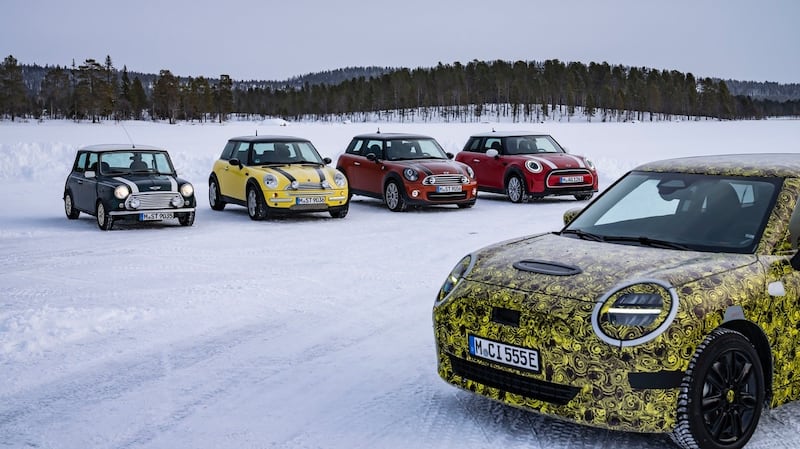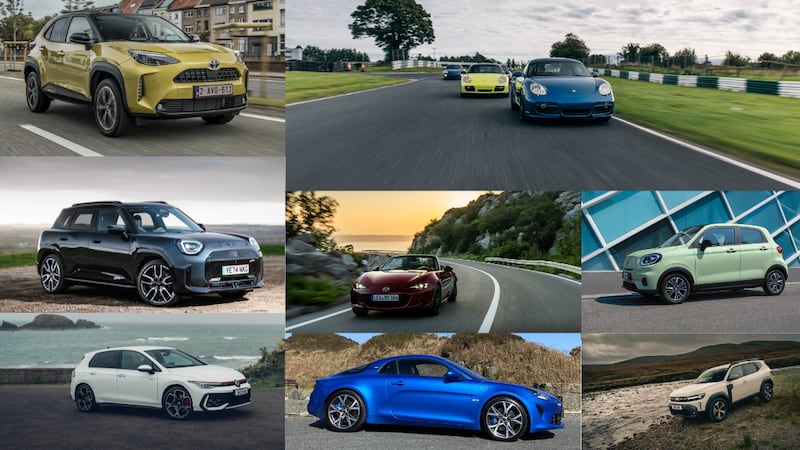Is the Mini about to become truly Mini again? Ever since BMW relaunched the Mini brand in 2001, many traditionalists have been grumpy about how big and bulky the current Mini has become, relative to its sylph-like 1959 original (apparently these people don't understand how crumple-zones work).
Now though, it looks as if the Mini will shrink a little when the new version goes on sale next year. Or at least this fully electric one seems as if it will. It’s a little hard to tell from these camouflaged prototypes of the new Mini EV running around north of the Arctic Circle, near the Swedish town of Arjeplog, but the front and rear overhangs do look a little shorter than those of the current Mini hatch.
Such a dimensional change would tally with comments made previously by senior Mini engineers who want to bring the car and the brand back to a more compact size, and reverse some of the bloating that’s gone on.
This new all-electric Mini will give both the designers and the engineers the best chance to do just that, without compromising on cabin space – a trick that the original Mini pulled off so well.
"With its vehicle concept geared to fully electric driving fun from the outset, the new edition of the original is ideally suited to deliver inspiring hallmark Mini agility and the creative use of space, which guarantees plenty of room inside and a small footprint" said Stefanie Wurst, head of the Mini brand. "Mini is on a path of growth and heading towards a fully electric future. Our iconic Mini three-door, maximises the experience for our customers through its electrified go-kart feeling combined with digitalised touchpoints - and a clear focus on sustainability with a minimal environmental footprint."
Those digital touchpoints will include the excision of the current car’s instrument screen in favour of a heads-up display, and a radical ultra-thin, free-standing circular infotainment screen that looks like a gigantic, digital dinner plate. Mini has also been making noises about customers being able to customise their cars after purchase, which sounds very much like an app-store equivalent in the dashboard, and the potential for subscriptions for some high-end functions such as automatic high-beam headlights and the like.

That interior, along with the body, battery, electric motor and everything else, will not be built in Mini's traditional home of BMW's Plant Oxford, in Britain. Instead, Mini has signed an agreement with Chinese carmaker Great Wall to co-design and build the electric versions of the new Mini in China. It had been rumoured for a while that the Mini would share a platform with Great Wall's own VW Beetle-esque Ora Cat EV, but that seems unlikely at this point. The electric Mini will sit on a unique EV-only platform, while petrol-engined versions will use the existing UKL1 platform and continue to be built in Oxford.
Mini isn’t saying anything about performance nor range as yet, only commenting that: “The electric drivetrain, high-voltage battery, power electronics and charging technology of the prototypes are already demonstrating their high degree of maturity at extreme temperatures below freezing. Snow-covered roads and specially prepared areas on frozen lakes also serve as ideal test tracks on which the characteristics of the drive, steering and chassis can be very sensitively tested, refined and harmonised with each other.”
Union flag brake lights
However, it will be unquestionably necessary for the second-generation electric Mini to dramatically improve on the current Mini Cooper S E’s paltry 233km one-charge range. Expect it to have at least 320km of range, to allow it to compete with Fiat’s 500e.
Style wise, it’s clear even under the camouflage that the look of the current model will be broadly carried over, albeit with a dramatic new rear light treatment that sees the end of the current chunky brake lights and their replacement with more distinctive, triangular lights linked by a bar running across the bootlid. Hopefully, that will also mean an end for the rather gauche union flag brake light design . . . You can also see from the styling that the Mini’s tech quotient will increase – there’s a distinct gap in the camouflage to allow a forward-looking camera and radar system to see out, indicating that it will come with lane-keeping steering and active cruise control.
By 2027 Mini wants half of all its sales worldwide to be made up of EVs. And it will launch a fully electric version of the next-generation Mini Countryman crossover to help bolster that figure. By 2025, the brand will have launched its last new combustion-engined model, and it has all but confirmed that sporty John Cooper Works versions of electric models are in the offing. Hopefully, there may also be room in the production schedule for the brilliant little "Urbanaut" Mini MPV which was shown last year – a car that would make far more sense for urban families than yet another SUV.














